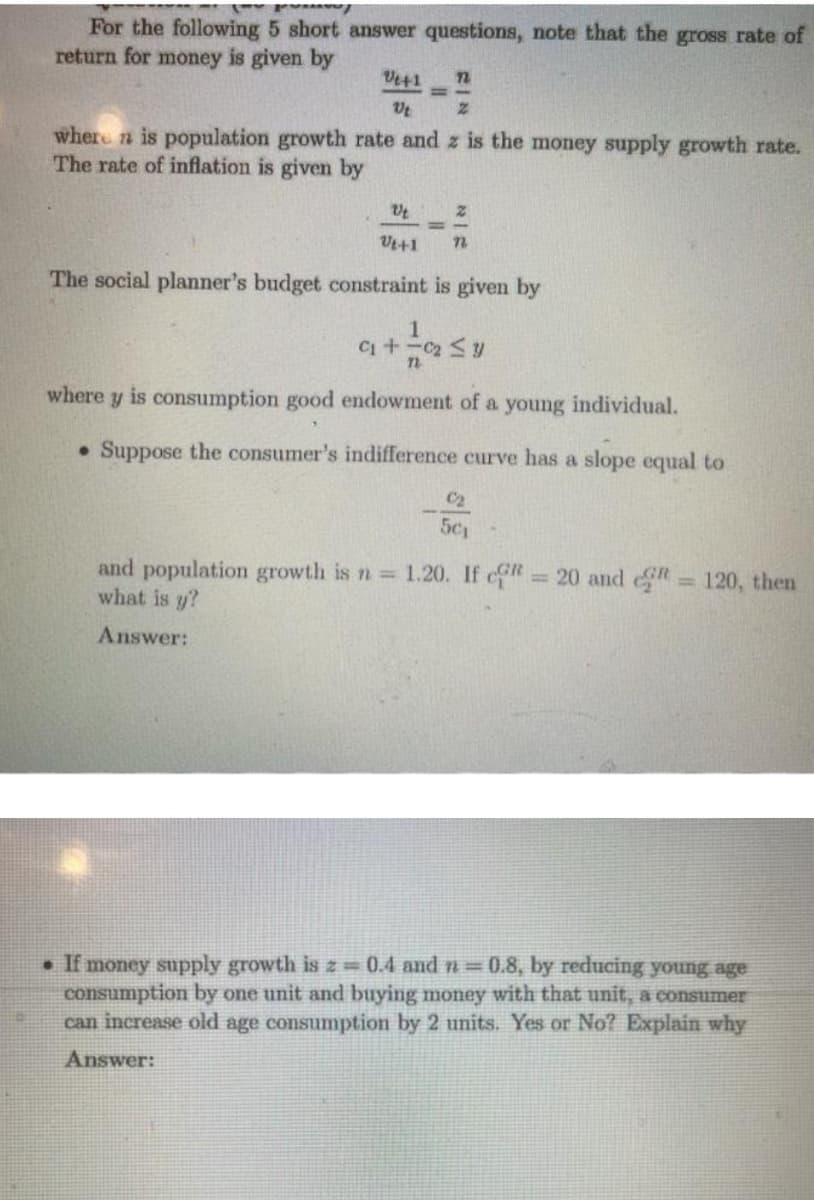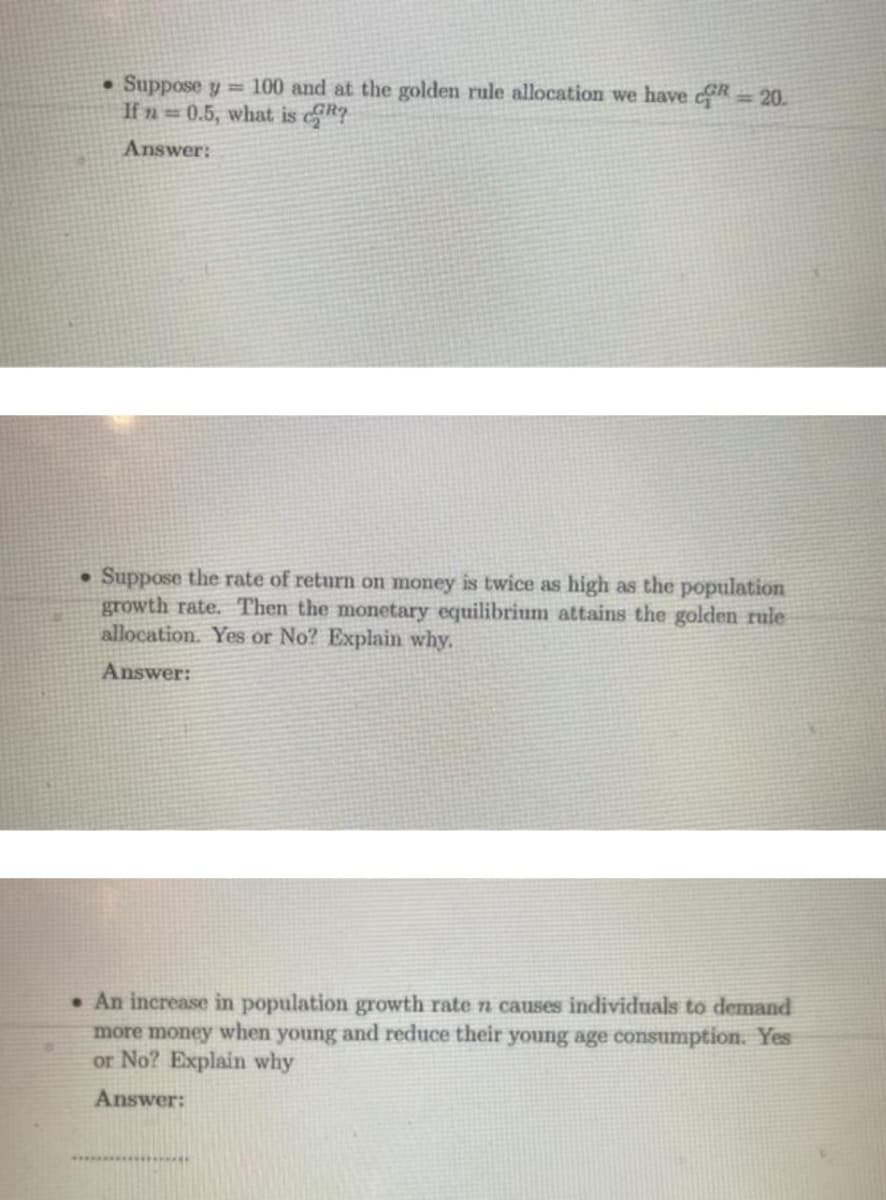For the following 5 short answer questions, note that the gross rate of return for money is given by Ve+1 172 %3D where n is population growth rate and z is the money supply growth rate. The rate of inflation is given by 72 Vi+1
For the following 5 short answer questions, note that the gross rate of return for money is given by Ve+1 172 %3D where n is population growth rate and z is the money supply growth rate. The rate of inflation is given by 72 Vi+1
Chapter17: Capital And Time
Section: Chapter Questions
Problem 17.2P
Related questions
Question

Transcribed Image Text:For the following 5 short answer questions, note that the gross rate of
return for money is given by
Ve+1
where n is population growth rate and z is the money supply growth rate.
The rate of inflation is given by
Vt+1
The social planner's budget constraint is given by
where y is consumption good endowment of a young individual.
Suppose the consumer's indifference curve has a slope equal to
C2
5c
and population growth is n 1.20. If c 20 and 120, then
what is y?
%3D
Answer:
• If money supply growth is z = 0.4 and n= 0.8, by reducing young age
consumption by one unit and buying money with that unit, a consumer
can increase old age consumption by 2 units. Yes or No? Explain why
Answer:

Transcribed Image Text:• Suppose y = 100 and at the golden rule allocation we have cR 20.
If n= 0.5, what is Ry
Answer:
• Suppose the rate of return on money is twice as high as the population
growth rate. Then the monetary equilibrium attains the golden rule
allocation. Yes or No? Explain why.
Answer:
• An increase in population growth rate n causes individuals to demand
more money when young and reduce their young age consumption. Yes
or No? Explain why
Answer:
*** ....*
Expert Solution
This question has been solved!
Explore an expertly crafted, step-by-step solution for a thorough understanding of key concepts.
Step by step
Solved in 4 steps

Knowledge Booster
Learn more about
Need a deep-dive on the concept behind this application? Look no further. Learn more about this topic, economics and related others by exploring similar questions and additional content below.Recommended textbooks for you


Principles of Economics 2e
Economics
ISBN:
9781947172364
Author:
Steven A. Greenlaw; David Shapiro
Publisher:
OpenStax



Principles of Economics 2e
Economics
ISBN:
9781947172364
Author:
Steven A. Greenlaw; David Shapiro
Publisher:
OpenStax


Economics (MindTap Course List)
Economics
ISBN:
9781337617383
Author:
Roger A. Arnold
Publisher:
Cengage Learning
